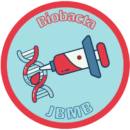Work involving human or animal subjects or tissues:
Animal experiments:
Biobacta Journal of Biochemistry and Molecular Biology (BJBMB) endorses the ARRIVE Guidelines for reporting in vivo animal experiments. Whenever appropriate, authors should include in the Materials and Methods (Experimental Procedures) section:
A statement indicating that the experiments were performed following named national legislation, where it exists, or, in its absence, with the named institutional/local body concerned with the ethics of experimentation, All animal experiments should comply with the ARRIVE guidelines (see: https://arriveguidelines.org/)
Experiments should be carried out following the European Communities Council (EU Directive 2010/63/EU for animal experiments, https://environment.ec.europa.eu/topics/chemicals/animals-science_en , https://www.eara.eu/animal-research-law#:~:text=Animal%20research%20in%20the%20European,organoids%20or%20through%20computer%20simulations , https://eur-lex.europa.eu/LexUriServ/LexUriServ.do?uri=OJ:L:2010:276:0033:0079:en:PDF)
Or with the Guidelines laid down by the NIH in the USA regarding the care and use of animals for experimental procedures. (e.g. the National Research Council, or NIH in the USA) (See: https://olaw.nih.gov/policies-laws/phs-policy.htm
- A full description of the anesthetic and surgical procedures used, and of peri-operative care.
- Evidence that authors took adequate steps to ensure that animals did not suffer unnecessarily at any stage of an experiment, whether acute or chronic.
Human experiments:
Patients have a right to privacy that should not be violated without informed consent.
When research work involving human participants, human material, or human data, authors should indicate whether the procedures followed were under the ethical standards of the responsible committee on human experimentation (institutional and national), or if no formal ethics committee is available, should be performed following the Declaration of Helsinki.
If doubt exists whether the research was conducted following the Helsinki Declaration, the authors must explain the rationale for their approach and demonstrate that the institutional review body explicitly approved the doubtful aspects of the study.
If human subjects are used, manuscripts must be accompanied by a statement in the Methods section, indicating that:
- The experiments were undertaken with the understanding and written consent of each subject.
- The study methodologies conformed to the standards set by the Declaration of Helsinki.
- The study methodologies were approved by the local ethics committee.
Authors should ensure that all risks are minimized and the subjects are not injured and do not feel they have been abused as a result of participating in the study. Fully informed consent should always be sought.
In cases of experiments involving minors, in addition to meeting above mentioned precautions, evidence must be presented that the experiments were performed with the understanding and consent of the legal guardian.
Identifying information, including names, initials, or hospital numbers, should not be published in written descriptions, photographs, or pedigrees unless the information is essential for scientific purposes and the patient (or parent or guardian) gives written informed consent for publication. Informed consent for this purpose requires that an identifiable patient be shown the manuscript to be published.
Nonessential identifying details should be omitted. Informed consent should be obtained if there is any doubt that anonymity can be maintained. For example, masking the eye region in photographs of patients is inadequate protection of anonymity. If identifying characteristics are de-identified, authors should provide assurance, and editors should note, that such changes do not distort scientific meaning.
The Editor reserves the right to reject a paper if there is doubt as to whether appropriate procedures have been used.
Editor, Biobacta Journal of Biochemistry and Molecular Biology (BJBMB)
